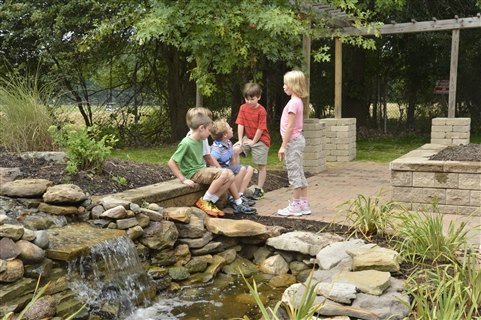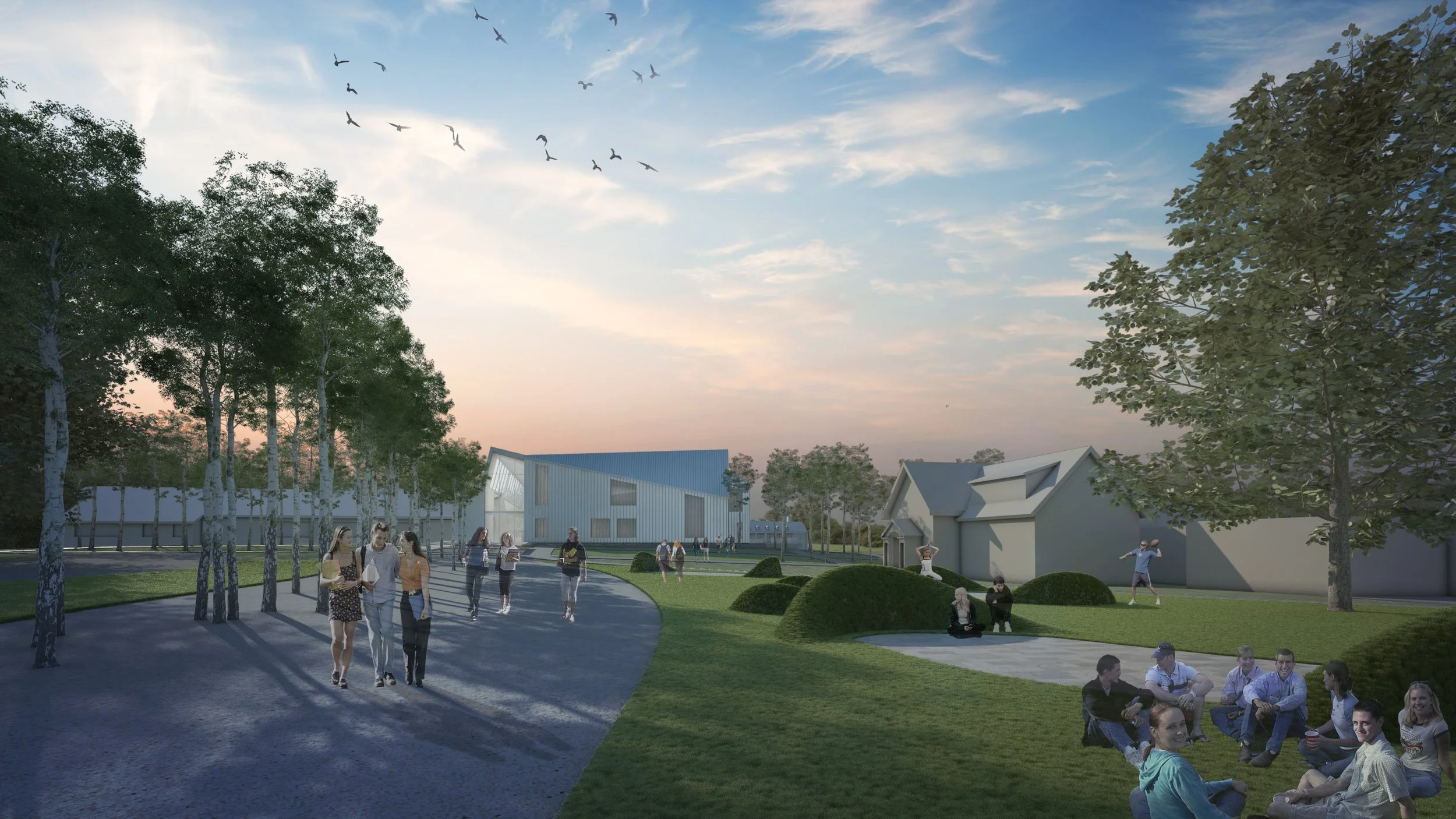Engaging and Inspiring Outdoor Classroom Designs
Traditional classroom settings have long been the norm for educational institutions, but there is a growing recognition of the benefits of outdoor learning environments. Outdoor classrooms provide a unique and dynamic space that spark student’s imaginations, fosters connections and respect for the natural world while enhancing their overall learning experience. As little as 10 minutes outside improves mood, focus and reduces anxiety.
Explore the concepts of designing engaging and inspiring outdoor classrooms, as we highlight the numerous advantages they offer and discuss key considerations for creating effective outdoor classroom landscape architecture.
Table of Contents:
Benefits of Outdoor Classrooms
Exposure to Nature Improves Well-Being
Increase Opportunities for Hands-On Learning
Promote Physical Well-Being & Healthy Lifestyles
Design Considerations for Outdoor Classrooms & Landscape Architecture
How Do These Spaces Integrate with Nature?
Outdoor Classrooms Must be Flexible & Versatile
Outdoor Classroom Landscape Architecture Should Accommodate Different Weather Conditions
Everyone Should be Able to Take Advantage of Outdoor Learning
Outdoor Classrooms Should be Safe & Secure
Prioritize Sustainability
Don’t Fall Behind, Integrate Technology & Connectivity
Outdoor Classrooms Promote Partnerships & Community Engagement
Benefits of Outdoor Classrooms
Outdoor classroom landscape architecture offers a multitude of benefits for students, teachers, and the overall educational experience.
Exposure to Nature Improves Well-Being
Experiences and exposure to nature improves students’ mental health and well-being, especially in early education. Spending time outdoors reduces stress levels, increases attention spans, and promotes overall feelings of happiness and relaxation.
By incorporating outdoor learning into the curriculum, students have the opportunity to escape the confines of traditional classrooms and immerse themselves in a natural environment that stimulates their senses and promotes a sense of wonder.
Increase Opportunities for Hands-On Learning
Outdoor classrooms provide endless opportunities for hands-on, experiential learning whether it is science, match, history, or more! By engaging students in outdoor activities, they develop a deeper understanding of the subject matter and make connections between theory and practice.
Additionally, introducing students to outdoor spaces offers the opportunity to take pride in and participate in what is necessary to upkeep the space, gardening activities, and improve their sense of involvement and connection to the outdoor environment.
Promote Physical Well-Being & Healthy Lifestyles
Finally, early childhood outdoor classrooms promote physical activity and a healthy lifestyle. Instead of sitting at desks for hours, students can engage in active learning through nature hikes, gardening, or participating in group games.
Physical activity not only improves physical health but also enhances cognitive abilities, attention span, and memory, ultimately contributing to better academic performance.
Design Considerations for Outdoor Classrooms & Landscape Architecture
When designing engaging and inspiring outdoor classrooms, several key considerations must be taken into account:
How Do These Spaces Integrate with Nature?
Outdoor classrooms should not only allow students the opportunity and accessibility to explore their surroundings but should also blend with nature, utilizing trees, vegetation, and other outdoor elements in its space.
Outdoor classrooms should feel harmonious, connecting students of all ages and levels to nature.
Outdoor Classrooms Must be Flexible
Outdoor classrooms should be adaptable to accommodate various activities and learning styles for multiple ages and grades. Incorporating movable furniture, designated areas for group work as well as open spaces for physical activities, ensures that the space can cater to different educational needs and empower teachers and educators to experiment with lesson planning and activities.
Outdoor Classroom Landscape Architecture Should Accommodate Different Weather Conditions
According to Harvard Graduate School of Education, “…the key to making outdoor classrooms work in extreme conditions is to keep kids warm and dry. That means keeping kids moving, offering warm drinks, and especially making sure everyone, kids and adults, have access to appropriate clothing.”
Providing adequate shelter and shade is crucial to ensure the outdoor classroom is usable in different weather conditions. This can be achieved through the use of canopies and pergolas as well as the strategic placement of trees and structures.
Everyone Should be Able to Take Advantage of Outdoor Learning
The outdoor classroom should be accessible to all students, including those with physical disabilities. Consideration should be given to pathways, ramps, and seating arrangements that allow for inclusivity.
Outdoor Classrooms Should be Safe & Secure
In addition to accessibility, safety measures must also be implemented to protect students from potential hazards. This includes considering appropriate fencing, supervision guidelines, safety lessons, and of course, ensuring that students can experience and interact with nature without worrying about harmful animals or plants.
Prioritize Sustainability
Incorporating sustainability into the outdoor classroom landscape architecture doesn’t end there. Sustainable practices can act as a demonstrator and examples for children to learn more about sustainable practices.
This can include rainwater harvesting systems, composting areas, or the use of eco-friendly materials. Teaching students about environmental stewardship through these sustainable features further enhances the educational value of the outdoor learning environment.
Don’t Fall Behind, Integrate Technology & Connectivity
Being out in nature is a great way to unplug. However, in a classroom setting, it’s important to integrate technology and nature when appropriate. With this being said, we recommend incorporating infrastructure to allow for projectors, ensure WiFi connectivity and even on-the-spot online research through iPads or even computers.
Merging nature and technology can enhance the learning experience and give students and teachers the tools they need to dive deeper into their lessons.
Outdoor Classrooms Promote Partnerships & Community Engagement
Outdoor classrooms open the door for endless possibilities! Partnerships with local organizations, the community, businesses, and professionals within STEM give students the opportunity to learn beyond the textbooks and classroom lessons. This provides enriched learning experiences and reinforces the importance of outdoor education beyond the school’s four walls.
Interested in Learning More About Outdoor Classrooms
Designing engaging and inspiring outdoor classrooms provides a transformative educational experience for students. Outdoor classrooms offer a multitude of benefits, from improving academic performance to fostering creativity and curiosity.
In order to successfully design outdoor classroom landscape architecture, collaboration between teachers, architects, and environmental experts is essential. We emphasize stakeholder engagement and community engagement to make sure spaces are optimized for educational purposes. If you are interested in transforming your space and are curious about how you could introduce your school to outdoor learning like St. Helen K-8, give us a call or contact us today.



